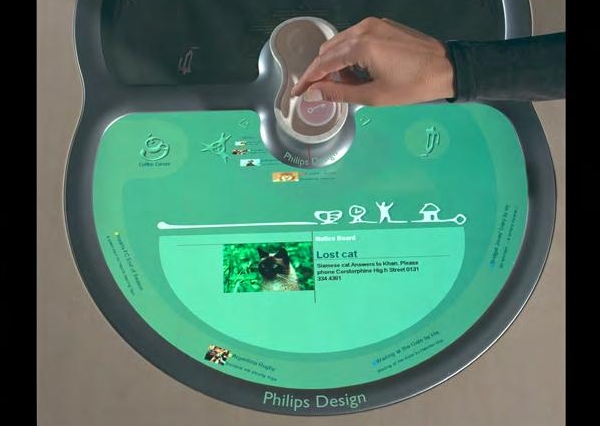On Internet of Things Fantasies, nine years later
Large scale natural WHAT?

Back in 2011, C. Nold (CN) and R. Kranenburg (RK) published a booklet, in the format of a dialog between them, about replacint the Internet of Things (IoT) with an Internet of People for a Post-Oil world. This is my own summary (emphasis mine) of the section about “Internet of Things Fantasies”, followed by a few comments on what it could mean today (*).
RK: The ultimate limit and scope of the IoT is demonstrated by the Sensing Planet idea: [using sensor grids to transform the whole planet into] our big Earth ball floating in space, harnessed and being steered in different directions, almost like a space ship. The question is who is in command…
CN" I think most of the fantasies for [IoT] revolve around making the whole of the human and natural environment legible for computer systems. This is a vision of a totally integrated techno-society which aims at “seeing” the state of the world in real-time and creating its own seamless reality. [Instead] We should make sure that a wide variety of qualities is embedded in the IoT, helping us to create a tangible vision that focuses on providing value for people.
RK: Unfortunately, the most tangible actualization of current Internet of Things (IoT) metaphors is the exoskeleton system [for soldiers:] Today, commandos are directed through the battlefield with the help of real time camera feedback. Tomorrow, consumers will be steered through smart shopping malls based on their status updates and spending profiles.
CN: These are extreme fantasies but fortunately, they are only bullet points in a PowerPoint presentation. There are good reasons why those scenarios would never become reality.
I call them fantasies because they have little meaning unless they reach their ultimate goal. This is different from research or an experimental process that has value whatever its outcome.
Imagine that instead of being able to seed the whole planet with sensors they can only cover a university. While that is interesting, it’s a long way from a universal Panopticon.
Today’s sensor grids fall far short of these goals, and it would be hard to justify the enormous expenditures, if they did not aim towards a totalizing ideology.
[For example] It’s amazing that in 2010 there are only about one hundred real-time, public pollution sensors for all of London, a city of fourteen million people (LondonAir). What we need is a better sensor-to-people ratio and a meaningful granularity of sensors that would allow local residents to identify polluting industries. Instead of the hubris of trying to build a Sensing Planet, let’s do something as basic and useful for people as creating functioning systems that sense the location of buses to help them run on time.
RK: I agree, instead of the Internet of Things let’s call it the Internet of People. We are talking about a network of relationships between people… In the mid-1990’s we saw the first attempts to give citizens real-time feedback on public transportation in cities… Hardly any of these projects led to the creation of actual products because companies could not agree on the intellectual property for the things that were developed and the timing for such business models was off.
CN: [Even if those projects] lacked the involvement of people who might actually use this stuff. The mid-1990s were a golden moment, however, simply because researchers and companies pursued socially productive instead of military or consumption-oriented scenarios.
CN: [In 2011] there is still a long way to go. On the one hand enterprises talk about co-design, on the other they speak about “ordinary people” without unique and specific knowledge. Technology companies don’t yet know how to work with empowered local and issue-based groups that want to drive innovation. It will take the impending crisis of climate change and peak oil to force enterprises to drop their attitudes and collaborate with a large variety of actors. It may take something as dramatic as a climate change induced large-scale natural disaster to get them to truly consider co-design.
“Large scale natural disaster”?
I sincerely thanks Nold for saying nine years ago that certain fantasies “have little meaning unless they reach their ultimate goal” (if that goal does make sense, of course). For what is worth, you can find plenty of evidence, with just a few clicks on this website, of how this applies not only to the Internet of Things, but also to (at least) driverless cars and, of course 5G networks.
But the most interesting part of that whole chapter is, of course, the last paragraph: “It may take something as dramatic as a… large-scale natural disaster to get companies to collaborate with a large variety of actors, for the common good”. Can you think of anything like that, right now? Personally, I have been saying for weeks now that the thing I fear the most about what is happening now is… to return to life just as it was in 2019.
Who writes this, why, and how to help
I am Marco Fioretti, tech writer and aspiring polymath doing human-digital research and popularization.
I do it because YOUR civil rights and the quality of YOUR life depend every year more on how software is used AROUND you.
To this end, I have already shared more than a million words on this blog, without any paywall or user tracking, and am sharing the next million through a newsletter, also without any paywall.
The more direct support I get, the more I can continue to inform for free parents, teachers, decision makers, and everybody else who should know more stuff like this. You can support me with paid subscriptions to my newsletter, donations via PayPal (mfioretti@nexaima.net) or LiberaPay, or in any of the other ways listed here.THANKS for your support!